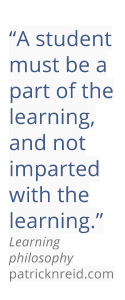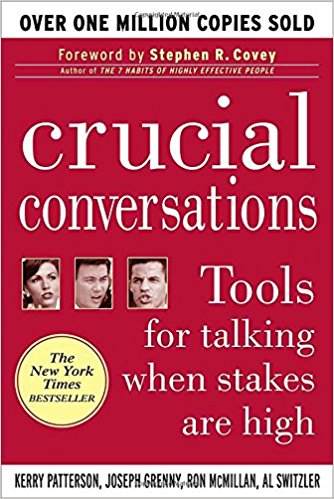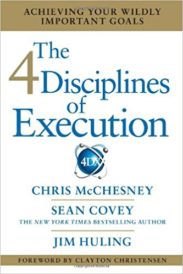Photo by Ken Treloar on Unsplash
Journey of COVA & CSLE in Digital Learning and Leading
A Masters in Education degree program that develops both digital knowledge and leadership abilities (2017), is how Lamar University describes their Digital Learning and Leading degree program. Before entering this degree program, I really wrestled what direction I wanted to take. My goal was to earn a degree that would allow me to be recognized as a beneficial hire at the upper end of a district. Where I could lead and grow an educational technology program. I toiled between a course that was primarily for administrators and this one. As I defined what an authentic learning experience was. As I chose the way I would present my understanding of the content. As I discovered an inner voice on educational philosophies and content creation and design. As I created authentic assignments, tailored to my current job expectation. This is when I knew I was actively participating in the COVA model. People ask me what I have thought of the degree program, and if I have learned anything. That is hard to answer, as with the program centered around the COVA model, everyone’s experience is going to be different and determined on what each person makes of it. I know that I have learned a great deal, but the best I can answer is “If you are looking for a degree program on how to use technology in the classroom, this is not it. If you want to learn how develop, address and innovate with technology, then yes you will learn something.”
Experiencing COVA in that mindset, made me rethink how I teach.
COVA Model and the CSLE Journey
This COVA model was used throughout the degree program. COVA stands for choice, ownership, a voice in an authentic learning environment (Thibodeaux, Cummings, & Harapnuik, 2017). As the last time I was a student in school was over 15 years ago, having the ability to choose how I wanted to show my learning and given the opportunity to use my voice was very uncomfortable, to say the least. With that, the goal of creating a significant learning environment (CSLE) was followed. Where the entire course and program provided the support and tools to create an environment that was suitable to having students thrive in the COVA model of learning. It has been three years since I had my own classroom, but train teachers and other educators routinely. Experiencing COVA in that mindset, made me rethink how I teach. It was a learning journey of struggles and rewards. One where attending other classes and training sessions are monotonous and impersonalized when the COVA model is not utilized.
Defining an authentic learning environment
Coursework in the program did not start out as expected. It was up to students to determine what and how tools were to be used to show understandings and create reflections and artifacts of learning. A choice of tools for eportfolios, presentations, and assignments was always available. Articles point to the idea that students that have a choice of the tools to be used, like eportfolios, created a long-lasting impact on the students use, and a continual use (Thibodeaux, Cummings, & Harapnuik, 2017; Ring & Ramirez, 2012). As the classes continued, finding the right medium to express and show understanding became the challenge. As directives were not given to the expectation of the medium, but only the objective that was to be shown. Finding a way to show understandings was a learning curve. The initial assignments increased in complexity as finding a way to show the learning, was just as important as the learning itself. Almost as a challenge based learning setup, the COVA model of choice and authenticity gave relevance to the learning.
From that first discussion with Dr. Harapnuik about how my WHY was not strong enough, I have felt that I need to develop my voice, but only by owning my work.
My initial innovation project, I still feel like I could have followed through with. Making personalized learning for teachers is important to me. However, to make my learning authentic, at that time, I needed to focus on what could I do to help my students first. That is where the idea of the practical and effective use of the iPad was started.
Creating change in an organization
The degree program does not only put the COVA model for understanding and applying digital learning, but also in leading a digital shift toward creating a significant learning environment. My biggest struggle, is leading change. My leadership style is leading by example. I am not one to promote by directing what to do, but by showing and modeling. This is something I still need to change. I am glad that a large initial component of this program was looking at and how to lead organizational change. With books like Influencer, Crucial Conversations, and 4 Disciplines of Execution I feel much more prepared in doing that. Even with my current leading style, I feel like that these books have been beneficial to me. As I look at the leaders that are successful in my district, and the changes I appreciate I see components of each of these books in those changes and leaders.
Innovation plan should be authentic
I still plan following through with my innovation plan, but I see it needing to change. Just as the other leaders that have been successful, I will need change, influence, and adapt as was described in previously mentioned books. I have not moved far on the innovation plan, because I fear the resistance that is among the staff. I do sense, though, that there is a quiet minority that is willing to accept to the challenge and truly utilize tech in their classroom to support and activate the learning. It is those teachers that I can support on creating a significant learning environment, where constructivist thinking and student choice, ownership and voice are seen through authentic learning expectations.
Modeling, coaching and creating the opportunities for teachers to experience the COVA model in professional learning, I hope to encourage those teachers to do the same in their classroom. Authenticity through practicality and usefulness. I have found it best, and pride myself on my trainings being useful to the teacher the next day or next week in class. It is this practicality that makes my training authentic. I feel it necessary to relate the experiences that I have had, to what I am expecting my teachers to do. Adapting as required by the direction of the district, administration, and feeling of teachers/students.
Application of the COVA model in CSLE
The goal of the Digital Learning and Leading program is to create leaders that will be instrumental in the shift toward a learning environment that will create innovative learners, thinkers and creators for the changing expectations in jobs and learning. This to was why I chose this program. As mentioned above, it was the draw to learn about making a change. About leading a new direction in the way that students learned at the districts I worked at. Developing methodologies that create a learning environment where their understandings and development was more important than a single standardized test. Applying the COVA model in professional learning and leading; creating an environment where both teachers and students feel like they can express themselves and gain a larger grasp of the learning.
Using COVA in CSLE now
It is the intrinsically motivated, self-directed learning, with relevant and constant feedback that has been shown to construct an environment of learning (Cattaneo, 2017). Creating a shift in the expectation of both teacher and student to provide and excel in that kind of environment requires an adjustment. I as stated before, I am a leader by modeling. This adjustment starts with the mode of professional learning and coaching that I provide. A way to encourage the learning to be guided by the participant and not the facilitator. Where the expectations and goals are set by the learner and supported by the instructor.
This will require a change in the teachers. A change in their perceptions of what is learning. As I have written about multiple times in my eportfolio (“Learning Manifesto”, “Process of iPad Innovation”, “iPad Educational Opportunities”) it is not about the technology but the learning and the end in mind. Technology can only accent teaching and learning, not create it. This accent can be in the positive or the negative. It is my goal to instill the practices of the COVA model in my teachers, as a way to shift the type of teaching and learning that occurs. Adjusting from a focus on passing a test, to allow students to have an authentic learning experience.
COVA in CSLE challenges and the future
My largest challenge at this point is creating buy-in. Where teachers understand the WHY before they can focus on the WHAT and the HOW. Using an empathy-based approach, as I was able to experience with this program. Amy Mayer and her FriEdTechnology team just created a webinar on creating personalized professional learning (2017). In it, they focused on different ways to create challenge based learning. I see this a lot like the COVA model. Where the learner has a choice and a voice on the way they are going to complete the challenge. Using ideas like that can support a shift toward learning in the format of the COVA model. Another way to create buy-in is by give teachers voice on what tools or skills they are interested in. Creating a personalization to the learning, and making sure that the skills that are learned are authentic and specific to them.
With the use of COVA in significant learning environment, students gain insight into whole answer.
Another challenge is the shifting of learning from a step-based, linear course of action to a more holistic format. Adjusting the goal of assignments from assessing with a test to a deeper understanding of the content. Another benefit that I have found participating in the COVA model is the focus on a deeper understanding of the topic. As I was expected to determine my own way of showing my understanding, I had to have a deeper understanding of the topic. Having only a base understanding allowed me to express my understanding in what I determined to be the most beneficial. With the use of COVA in a significant learning environment, students gain insight into the whole answer.
In the future, I look forward to sharing what I have learned in this coursework. Sharing how giving students a choice and voice in the demonstration of their learning gives them ownership in their learning. Encouraging teachers to create assignments that have an authentic learning goal, and not just one to fill in columns in their grade book. Sharing the benefit of a creating a significant learning environment. Where students are supported completely in all facets of learning.
It is the actions, successes, failures, and other experiences that defines our learning journey.
COVA and CSLE with constructive cognitivist
It is the eportfolio that has be the corner pieces on all classes in this program. It is the eportfolio that I can reflect back onto recognize my successes and failures. As I look back on these posts that I have created I look at my thinking for each of them. Where have they taken me? What have I learned from the experience? What new knowledge or experiences have I constructed from these courses? I have been able to develop a deeper understanding using eportfolios. Looking specifically at a post I created in November of 2016, entitled “Learning Philosophy”  I described how my innovation plan worked with my learning philosophy of constructing cognition through experiences and reflections. I still believe that to be my philosophy. It is the actions, successes, failures, and other experiences that define our learning journey. As COVA has created a learning environment that encouraged developing one’s voice and ownership with choice and authentic assignments the experiences were stronger and as were the cognitive developments. By creating my own goals and objectives, I was able to determine what each assignment meant. I also pushed myself harder than was probably expected or implied on the rubrics and assignments. I enjoyed the freedom to explore and create. To use my work as a way to construct my own understandings and display those in a medium that I felt best.
I described how my innovation plan worked with my learning philosophy of constructing cognition through experiences and reflections. I still believe that to be my philosophy. It is the actions, successes, failures, and other experiences that define our learning journey. As COVA has created a learning environment that encouraged developing one’s voice and ownership with choice and authentic assignments the experiences were stronger and as were the cognitive developments. By creating my own goals and objectives, I was able to determine what each assignment meant. I also pushed myself harder than was probably expected or implied on the rubrics and assignments. I enjoyed the freedom to explore and create. To use my work as a way to construct my own understandings and display those in a medium that I felt best.
It was these experiences that I believe have shaped my feelings on how training and learning should occur in my career. As a form of empathetic learning, creating these assignments I could feel as the learner feels. Being a part of the learning process, made me learn more. It pushed me to create and strive to better. As I would complete each assignment, the use of eportfolios kept going to back to the development of my understandings with each reflection. Keeping the learning grounded in the goals and objectives of each assignment.
References
Cattaneo, K. H. (2017). Telling Active Learning Pedagogies Apart: From Theory to Practice. Journal Of New Approaches In Educational Research, 6(2), 144-152.
FriedTechnology. (2017, May 23). Personalizing PD with friEdTechnology. Retrieved October 18, 2017, from https://www.youtube.com/watch?v=IXgAl1V-VTk.
Lamar University. (2017). Online M.Ed. in Digital Learning and Leading. Retrieved October 16, 2017, from https://degree.lamar.edu/programs/master-of-education-in-digital-learning-and-leading.aspx.
Ring, G., & Ramirez, G. (2012). Implementing ePortfolios for the assessment of general education competencies. International Journal of ePortfolio, 2(1), 87-97. Retrieved from http://www.theijep.com/pdf/IJEP62.pdf.
Thibodeaux, T., Cummings, C., & Harapnuik, D. (2017). Factors that contribute to ePortfolio persistence. International journal of ePortfolios, 7(1), 1-12. Retrieved October 16, 2017, from http://www.theijep.com.



